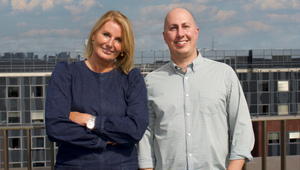
Frozen: Why Design Flaws Failed Iceland

It was an honourable pledge: to remove palm oil from all own label products by the end of 2018.
Not only did the pledge highlight the environmental impact of palm oil inclusion in everyday products, it clearly positioned Iceland as a responsible brand owner. Supported by an attention-grabbing ad campaign, it was a smart move for the retailer, signalling a shift to attract younger, more conscientious shoppers.
But, as revealed last week, in an attempt to meet this deadline Iceland chose to remove their branding from some offending items, rather than the ingredient itself.
This simple, but misjudged design decision threatens to undermine the integrity pledge, potentially trivialising the issue Iceland was aiming to combat – and undermining trust in a brand genuinely trying to do the right thing.
The retail chain fell into the trap of trying to use design purely to solve a problem rather than harness it to tell a story.
Design is Storytelling
Today’s consumers expect transparency – even more so from businesses with a stated agenda. Moving the offending palm oil products out of their own label portfolio so that consumers can still buy the goods they love is undoubtedly commercially sensible. But, choosing to list those same items in almost identical packs – just without Iceland branding – comes dangerously close to irresponsible design and risks accusations of misleading the shopper.
Design could have been harnessed to tell the story. Why not use packaging as a touchpoint to explore the narrative surrounding the complexities of achieving this?
For example, Iceland CEO Malcolm Walker rightly countered that wasting food to hit the goal is just as environmentally harmful, so existing stocks should be sold first. And he’s right – especially in a world where a third of the world’s produced food goes to waste.
Signposts on pack, in-store, and across media channels could bring this message to life. A simple ident, stamp or sticker re-affirming commitment to removing palm oil, highlighting which products have achieved the standard and which have not.
This stamp might morph swiftly into a 'Palm Oil Free' statement for new stocks.
Even better, design could be open sourced - shared with competitors to become a universal (and easy-to-understand) design metric for consumers. This is exactly what Diageo are doing with their newly designed responsible drinking guidelines, demonstrating purpose that goes beyond brand.
The Own Brand Differentiator
The story also brings into question what ‘own brand’ signifies. Most started life as budget options. But have since evolved to reflect back on their master brands. Waitrose developed their own label range to reflect ‘best quality assurance’. Co-Op’s recent rebrand reflects heritage and the simplicity of their customer focus. Iceland has always been a value brand, so an ‘ethical’ stance gave them a positive point of difference, not least against other discounters.
Perhaps that stance was unduly amplified by the TV ad.
Ad culture drives black and white big statements and ‘pledges'. Design is a subtler negotiation based on consumer truth – in this case, Iceland as a commercial organisation who wants to phase out palm oil rather than ban it.
So, what is ‘responsible design’?
Our own take is that responsible design delivers the cut through brands need in challenging times and underpins brand point and purpose.
While there’s no single roadmap, with Iceland’s interesting case in point, there are some clear principles brands can adopt:
- Never underestimate the power of design to tell a brand story. Brands such as Method and Dorset Cereals go beyond ATL by using design to tell brand narratives on pack.
- Build responsible design with clear signposting of information at all times, even when addressing a thorny subject. Brands that don’t subscribe to transparency put future growth at risk – remember Turkey Twizzlers, anyone?
- Use design to help tell an imperfect story – and consumers will trust you (and maybe even love you) all the more for it. KFC’s 'FCK' ad is a brilliant example.
Responsible design should not be used to sell more stuff. Instead it should be used to make the stuff you do sell, better.
Now that really would be an honourable pledge, wouldn’t it?
Chris Ambidge, head of brand & design and Martin Servers, brand & design strategy officer, Geometry UK















